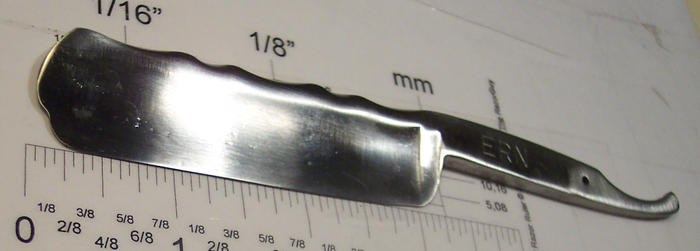Results 11 to 20 of 28
Threaded View
-
09-17-2014, 04:38 PM #1
 Need some advice on how not to buff away part of a toe
Need some advice on how not to buff away part of a toe
I've spent the past few weeks learning how to use a buffer. I keep running into a problem: if there is heavy pitting toward the toe, buffing eats away a millimeter or two on the thin bottom half of the blade at the toe. Here below I'll post pictures of an example from an Ern Snake/Eagle 7/8. I haven't finished buffing the show side of the blade yet.



Actually, I have two questions: (1) how to avoid doing that to the toe? and (2) what to do with the toe once that is done to it?
My only recourse at the moment is to use a grinder to reshape the upper part of the toe. Alternatively, I could leave the dent in the lower part of the toe, just live with it, but I don't want to do that.
Has anybody had this problem?
I thought maybe the problem came from running the blade lengthwise along the buffing wheel and letting the wheel run over the end of the toe. I switched to holding the blade parallel to the ground and running it across the buffing wheel from side to side. That was what I did with this Ern, and as you see, I got the same result.
I've been using 4" and 6" wheels.
JoeLast edited by carrolljc; 09-17-2014 at 04:46 PM.


 8Likes
8Likes LinkBack URL
LinkBack URL About LinkBacks
About LinkBacks









 Reply With Quote
Reply With Quote